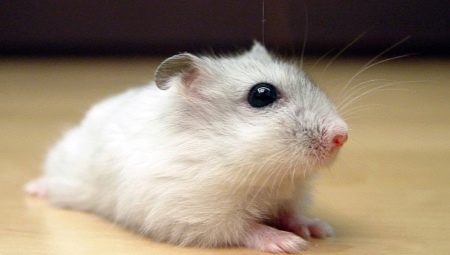If you have long dreamed of having a pet, but your apartment does not have enough space for a dog or cat, the hamster is the perfect solution. A small moving animal does not require complicated care, and if properly handled, it can become a real friend. It’s interesting to watch hamsters of any breed: they fill their cheeks with food, clean their faces, run in the wheel - these are very fussy and active animals. But in order for you to be able to make friends, you need to study the behavior and content of the hamster.
Among the popular domestic breeds, it is better to choose the one that you will be easier to care for. And it is important for exotic lovers to know the specifics of unusual breeds of hamsters and which ones should not be kept at home.
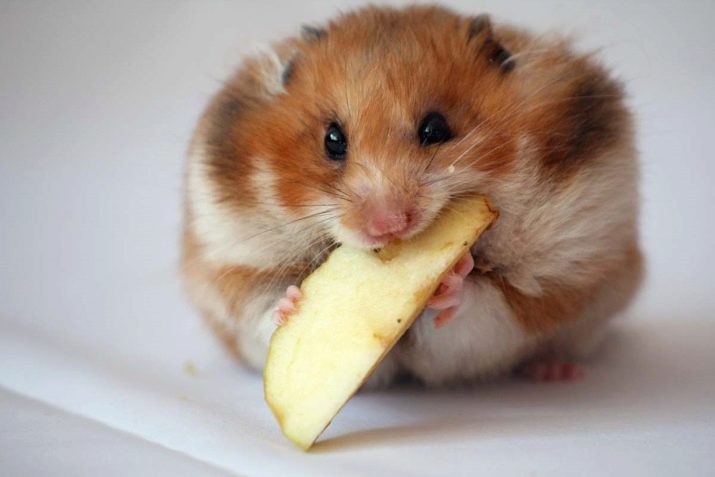
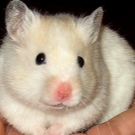

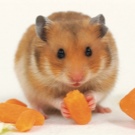
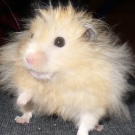
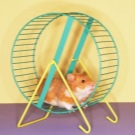
Features
The hamster belongs to the order of rodents - these are small animals with short legs and tails, as well as small ears. Despite the fact that there are about 19 of their species, they are all similar to each other, but differ only in size and color, which depend on the habitat. Thus, the inhabitants of the desert plains received a yellow or sandy shade. Hamsters living in the forest-steppe zone got a brown or gray skin. And the rocks are black or dark brown in color. This allows tiny animals to safely camouflage themselves from attacks of aerial predators.
Nature rewarded hamsters with sharp and strong teeth - this allows them to cope with solid foods such as nuts and cereals. The animal has only 4 teeth, which grow all its life. Therefore, at home, he needs a special mineral stone, about which he will grind his teeth.
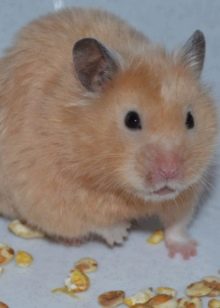


The diet of the hamster is quite extensive, it includes:
- cereals and legumes;
- vegetables;
- fruits;
- roots;
- herbs;
- berries;
- nuts
- seeds.
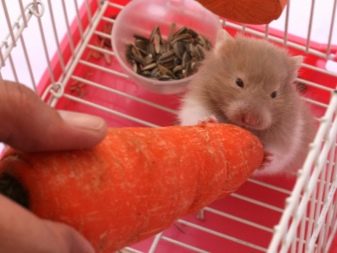

Certain species, such as the Transbaikal and rat-like hamsters, also feed on insects and carrion. In the natural environment, the hamster has access to food only in the summer-autumn period, so the animal of any breed will definitely stock up for the future. To do this, he has special cheek pouches that allow you to store food and transfer supplies to the store.
So, we can conclude that the hamster needs a fairly rich diet to provide the body with the necessary elements. As a basis for the diet, a special fodder mixture, additionally enriched with vitamins, is perfect for a pet. In summer, hamsters need to get fresh vegetables, fruits, berries and greens. To do this, fit:
- carrot;
- broccoli;
- radish;
- apples
- pears
- apricots
- Strawberry;
- Blueberries
- currant;
- dandelion;
- clover;
- lettuce leaves.



Proper nutrition plays an important role in the well-being of a pet. In no case do not give the hamster dairy products, sweet flour pastries, as well as some types of vegetables and fruits. Here is a list of foods prohibited for a domestic rodent.
- Dairy products (sour cream, yogurt, milk, kefir). They can trigger a digestive upset that is deadly to the hamster.
- Flour products (bread, rolls), Such food leads to diseases of the internal organs and can cause bloating.
- White cabbage. Her use threatens poisoning and indigestion.
- Citrus fruit. Tangerines and oranges can cause allergic reactions and even oncology.


Hamsters are used to getting the necessary amount of water from food, because in natural habitats they rarely have access to a water source. However, the presence in the cage of a pet drinker with water is still necessary. Depending on the air temperature and the food received, the rodent will be able to obtain additional moisture if necessary.
Wild rodents are territorial animals; they live alone in underground burrows. Therefore, two individuals of the same sex will not be able to get along in one cage. Hamsters are nocturnal. In the natural environment at night they go in search of food - so the animal is less likely to fall into the clutches of a predator, such as a weasel or a heron. Be prepared for the fact that your pet will spin the wheel most of the night and rustle with sawdust.
The life span of a wild hamster is 1-2 years. With proper care, a home rodent can survive for more than 3 years.
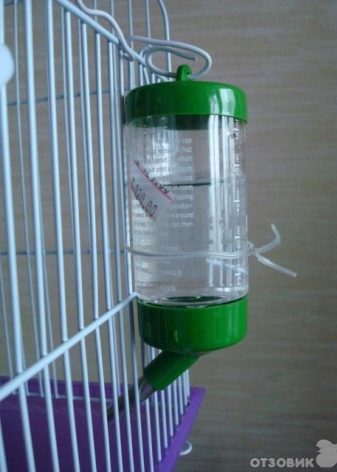

Popular breeds
Despite the ease of care, each type of domestic rodent has features. Before choosing the breed of the future pet, you should consider the habits inherent in its representative. This will help you quickly gain confidence in a tiny and shy by nature animal.
It is believed that the life expectancy of a hamster who is friends with the owner is much higher. Indeed, he is less likely to experience stress, which affects the general condition of the body.
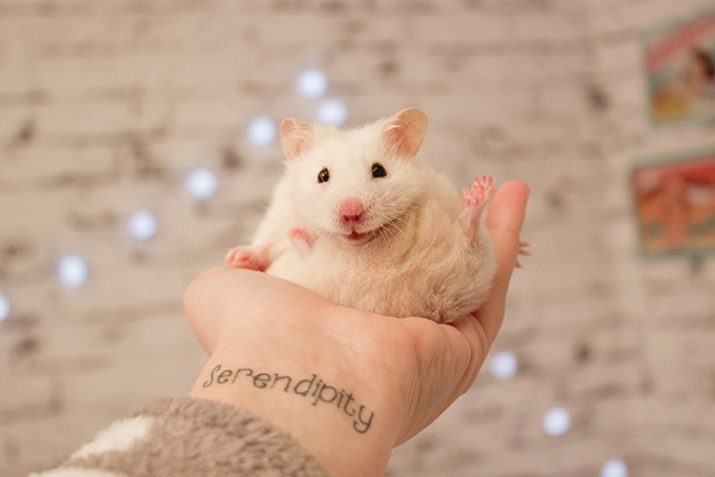
Below are the most common home breeds of hamsters with a brief description.
Chinese
Representatives of this breed most often have brown fur with an ash tint, their weight is about 50 grams, and the length varies from 8 to 12 centimeters. They feed on insects and cereals. They are distinguished by their friendly character - after taming, they actively contact the owner and seek communication. In addition, this is one of the few breeds that allows the maintenance of several individuals in one cage.
Representatives of this breed have a decorative variety - it is distinguished by a white or spotty color.
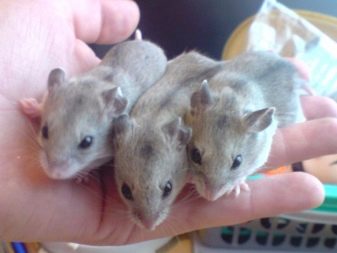
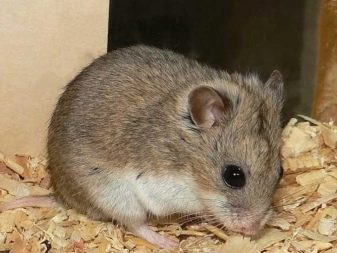
Syrian
The Syrian breed is one of the most popular due to its friendly disposition and easy care. In some cases, their life expectancy can reach 6 years. However, representatives of the Syrian breed do not tolerate cell neighbors. Their feature is also that they lead a less active lifestyle at night. Among the decorative varieties of the Syrian breed, Angora, one-color and golden can be distinguished. The Angora hamster has a long and fluffy coat of white or red color, which requires special care.
Sometimes this furry Syrian is called royal, although a separate breed, called the "royal", does not exist. The one-color hamster has a completely black or white color. The golden soft peach hair is of medium length.
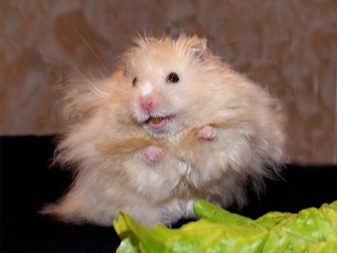
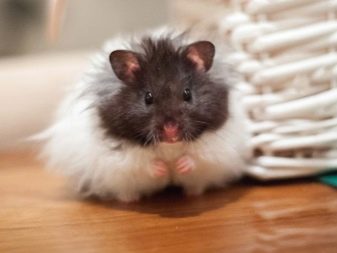
Grey
The gray hamster reaches a length of 13 centimeters. The color of the coat varies from light gray to smoky or brownish gray. At the same time, the abdomen and legs are white, and the tail, the length of which can reach 3 centimeters, is slightly pubescent or bare. He prefers seeds and insects in food. This animal also loves succulent plants.
It has a sensitive digestive system, when choosing this breed, you should carefully monitor the quality of the feed and cleanliness in the cage.
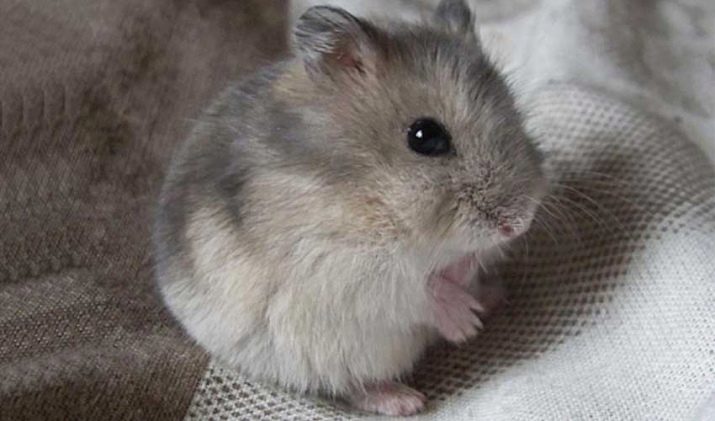
Dzungarian
Representatives of this breed do not grow more than 10 centimeters in length. Their color varies from brown to gray and light brown. The abdomen is always lighter, and on the back there is a black stripe. Particularly active at night. In the wild, they prefer seeds and greens. Very friendly from the first days of acquaintance, bite extremely rarely. When replacing sawdust once a week they have absolutely no smell.
Dzhungar hamsters are incredibly lively - they should not be allowed to walk around the room without a ball, as they can quickly slip out of sight. This type of rodent belongs to the borefoot.
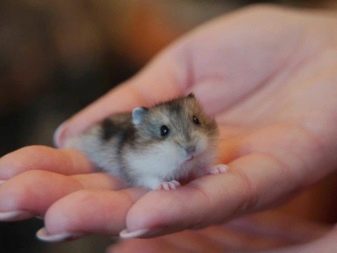

Roborovsky Hamster
Like the Dzungarian, it belongs to the borefoot. It is distinguished by its tiny size - the length of the rodent of this breed does not exceed 5 centimeters. The coat has a gray color with white spots. Representatives of this breed are friendly not only to humans, but also to their own kind. It is permissible to cohabit several individuals. Due to the agility and tiny size, it is not recommended to let them out for a walk without a special ball.
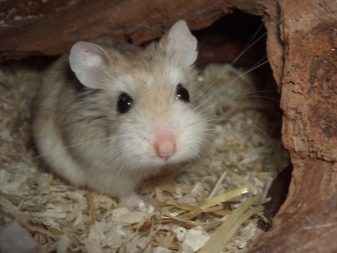
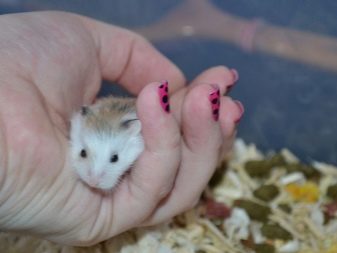
Campbell hamster
One of the few varieties, the wild representatives of which do not live alone, but in a colony. This dwarf breed, not exceeding 10 centimeters in length, belongs to the borefoot. Golden fur with a dark strip on the back. The peak of activity occurs at night and in the morning. However, representatives of this breed have fragile health. They are prone to diseases such as oncology, diabetes and cataracts.
If you decide to breed these rodents, be prepared to pay special attention to the state of their health. As well, Campbell's hamsters are difficult to tame and often bite, so families with children should not get them.
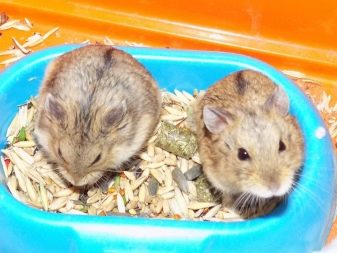

Sungursky
Sungursky hamster - another variety of dwarf breed, belongs to the borefoot. Its length reaches 8 centimeters, a coat of smoky color. Extremely active at night. Friendly to people and getting along with other representatives of their breed, however, in the case of cohabitation, fights and skirmishes may occur.
If you give this baby fresh fruits and vegetables, you need to carefully monitor that he does not make “stash” of them, since eating stale food can lead to digestive upset. Prone to overeating.
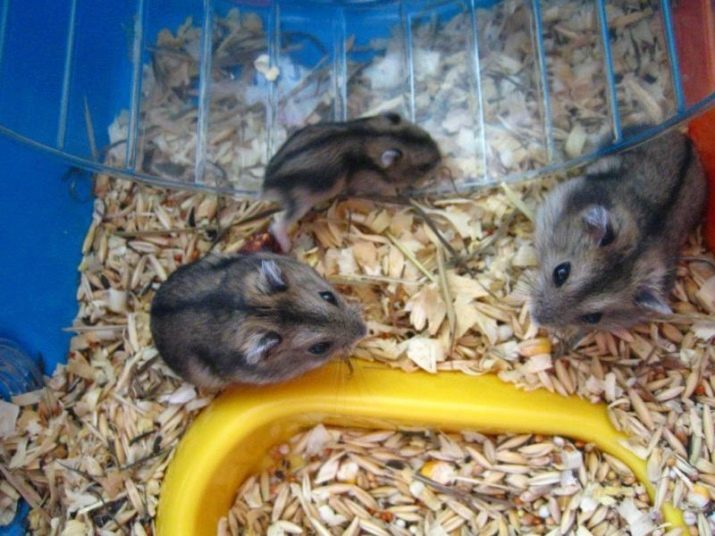
Siberian hamster
Dwarf breed, the length of which does not exceed 9-10 centimeters, and weight - 40 grams. The peak of activity of the “Siberian”, like most representatives of the species, occurs at night. The coat is silver with a blue tint with a black stripe on the back, due to which it is often confused with a representative of the Dzungarian breed. By winter, the color of the hamster becomes white. It does not tolerate neighborhood, it is difficult to tame.
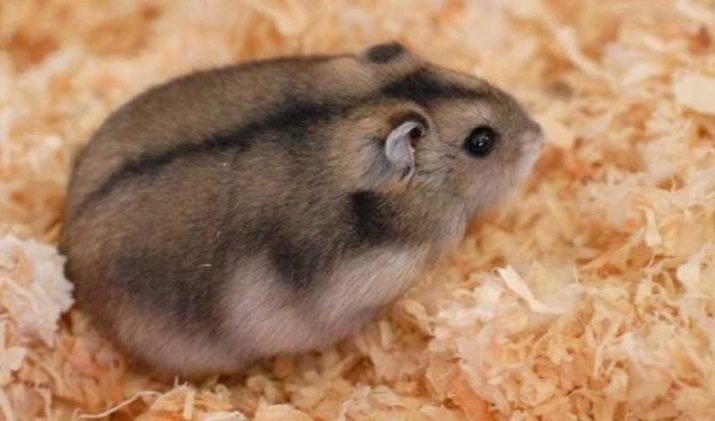
So, we can conclude that despite the similarity of habits and lifestyle, there are some nuances in the care of each breed of hamsters. For families with children, it is better to choose a friendlier breed.However, even the most contact and sociable animals require a special approach and respect. If you bought a hamster for a child, do not leave him alone with a rodent until they get used to each other and the child learns to handle it with care.
Varieties with poor health should only be started if there is a veterinarian in your city who can cure such a baby. Unfriendly breeds should be acquired if you just need to watch your pet. Such a hamster will perceive any contact attempt as a danger, it is better not to disturb it without a good reason, such as replacing a filler.
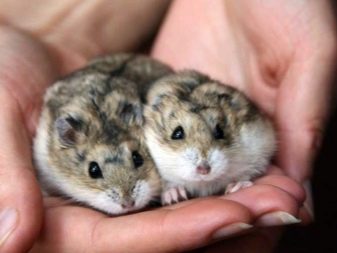
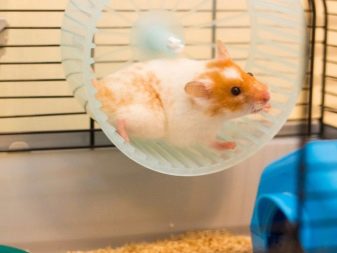
Unusual species
In addition to the fluffy friendly babies familiar to humans, in nature there are also special breeds of hamsters. Some of them look almost the same as home ones, but differ in aggressive behavior, others have unusual external signs, but have a good-natured disposition, and still others have distinguished themselves in all respects. One way or another, all these rodents change our understanding of hamsters, their appearance and lifestyle.
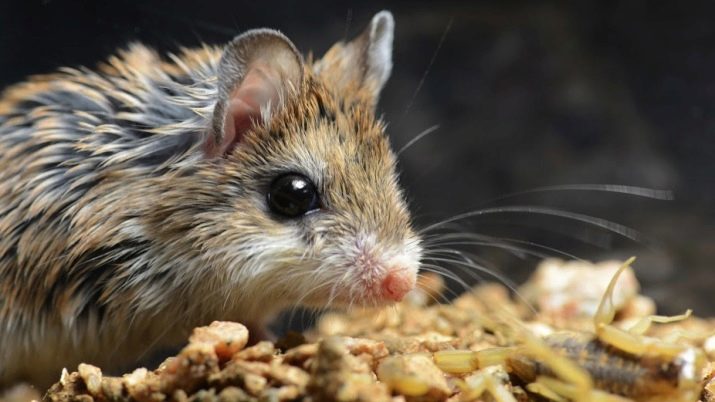
Below are exotic breeds of hamsters with a brief description that you are unlikely to find in a simple pet store.
Grasshopper, he is a scorpion hamster
This harmless-looking animal is not much different from domesticated species, but its appearance is very deceiving. The length reaches 14 centimeters with the tail, and the weight is only 50-70 grams. Color - red with dark brown. Despite its miniature size, this animal is an absolute predator! He hunts at night, the basis of his diet is rats, mice, lizards and insects. But this is not all his unusual qualities - the representative of this breed, thanks to its genetics, is not at all afraid of pain and has resistance to poisons.
For example, scorpion venom acts on an hamster as an invigorating drink. It was this feature that gave him his second name “scorpion”.
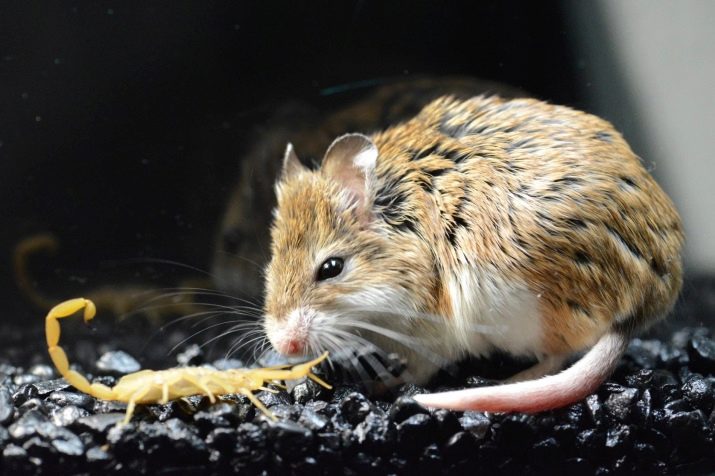
African hamster
This animal looks like a hedgehog or porcupine. Compared to domestic species, it is distinguished by its large size - from 25 to 35 centimeters in length, and the weight of an adult can reach a kilogram. The coat is thick and long, with a characteristic mane along the spine, due to which it is also called “shaggy”. The color is black and dark brown with white spots.
The peculiarity of this rodent is that, sensing danger, it sprays odorous toxic substances from its lateral glands. In most cases, a predator that tried to attack a shaggy hamster dies from a high dose of toxins.
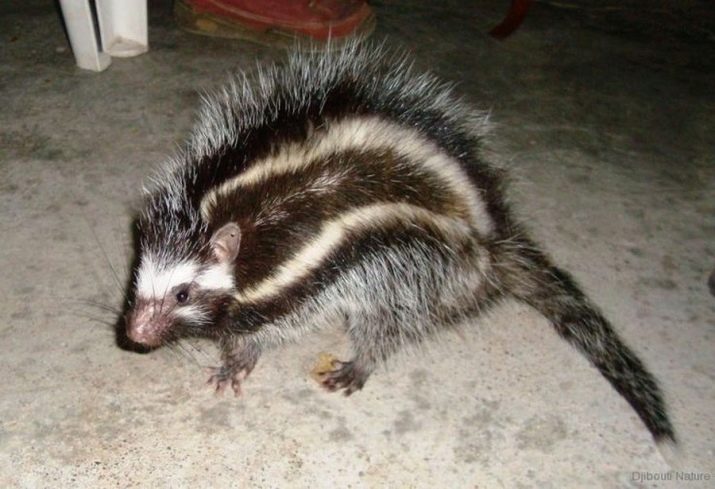
Eversmann Hamster
This thoroughbred rodent is named after the naturalist Eduard Eversmann. It almost does not differ in habits and appearance from domesticated brethren, however, due to its low abundance, this species is listed in the Red Book. The external features of the animal are gray-red hair with a white abdomen, up to 16 centimeters in length. Its maintenance and care are the same as that of the Dzungarian hamster. The animal is generally friendly, but can sometimes bite.
More often this happens if the hands smell of food. therefore it is not recommended to feed the representative of this breed with it, since in this case it will associate the smell of its owner with the smell of food.
At home, the rodent is prone to obesity, so it is important not to overfeed it.

Albino Hamster
Albinism is a gene mutation that can occur in any breed, whether Syrian or Chinese. Regardless of the species, such animals are distinguished by a white fur coat, as well as a pink nose and red bead eyes. In addition to its unusual appearance, the albino animal has a more fragile health. He is prone to skin and eye diseases, tolerates stress harder.
Such a snow-white baby with red eyes needs to be protected from direct sunlight, since the retina of the eye in albinos is not adapted to bright light. It is better to put a cage with him away from the windows.
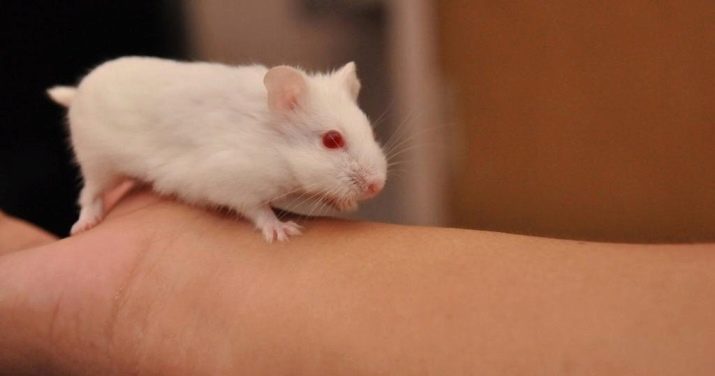
Common hamster
This wild relative of our pets is large - about 35 centimeters, and the tail is about 6-7 centimeters in length. The fur coat of the animal is saturated brown with white spots, and the abdomen is black. This species is difficult to tame, more suitable for observation than for contact communication.
If you decide to get a wild hamster at home, you should take care of a spacious home for him. A cage designed for a decorative rabbit is more suitable for him. You must also find the wheel of the right size - with a lack of motor activity, this animal is often sick and its life expectancy is reduced.
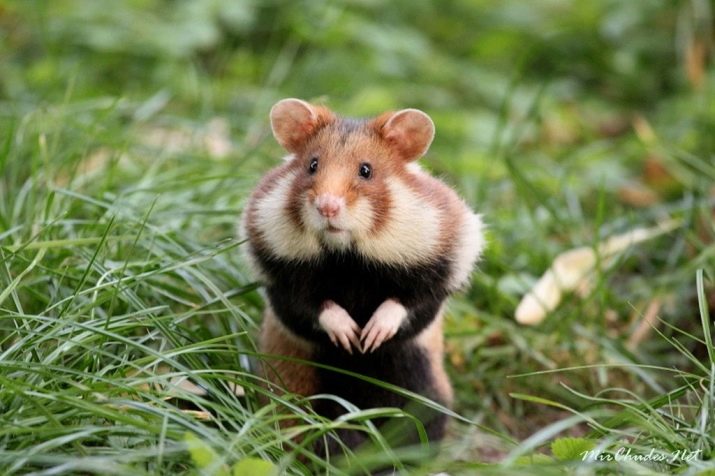
Rat hamster
This rodent is distinguished by a larger, in comparison with domestic species, size, and a long bald tail, which makes it look like a rat. It is possible to understand that this is a hamster after all by its color - a dark brown skin is not characteristic of the mouse family. The animal weighs about 250 grams, and in length it can reach 25 centimeters. This is an unfriendly species that is difficult to tame, as a pet is extremely rare.
If you still decided to purchase this rodent, It is important to provide him with comfortable conditions, namely a spacious cell and a balanced diet.
You should not start a representative of this breed in a family with young children, as he will experience stress from noisy games and excessive attention.

Hamster Radde
The breed, discovered by the Russian naturalist Gustav Radde and named after him. Its length can reach 28 centimeters, the color is dark brown and gray with white spots. This species is not intended for home maintenance, since the animal is difficult to tame, but you can find an approach to it if you have patience. Able to be friendly to only one person.
The second name of this breed is “Dagestan”, since the halo of its habitat is the foothill regions of the Caucasus.
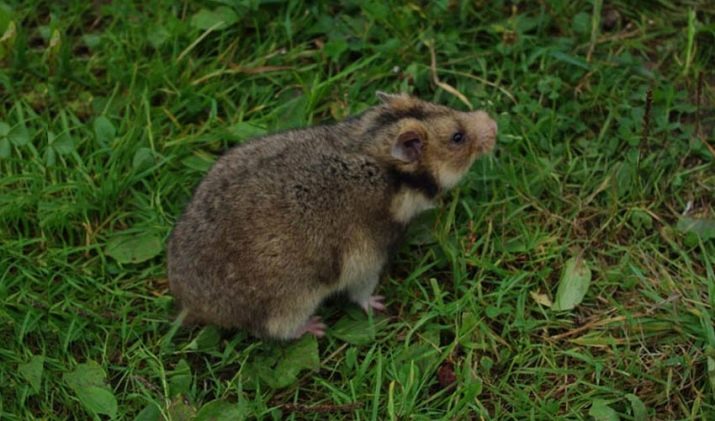
So, each exotic breed has its own horrific or surprising features. It is better to abandon their breeding at home, because the content of exotica hamsters, as a rule, requires more significant financial costs, and some of them are listed in the Red Book. It should be understood that the acquisition of such rodents is a great responsibility. If a representative of one of the wild breeds becomes ill, you simply cannot find a qualified specialist to assist the animal.
Breeding wild hamsters is worth it only if you have special knowledge about them or have a scientific interest in representatives of exotic species.
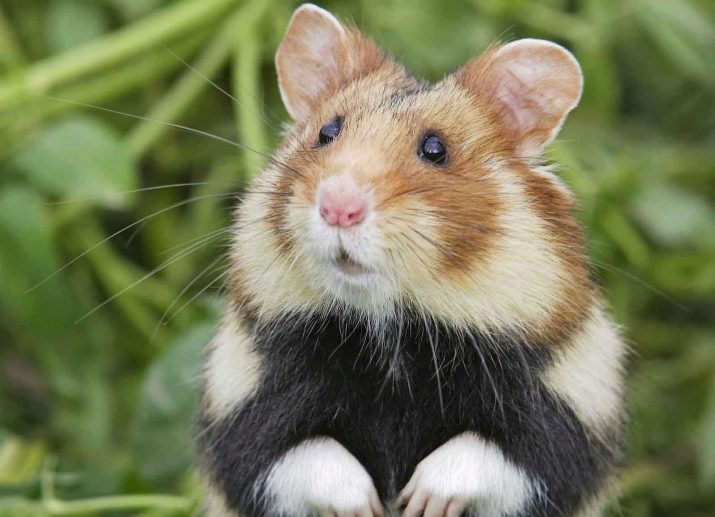
How to choose a hamster?
When choosing a hamster, the first thing to do is to determine its breed. If you want a friendly pet - give preference to breeds popular for home breeding.. If you like to watch rodents and study their behavior, as well as you know how to help the baby in case of illness, you can consider wild breeds. For families with small children, it is best to choose easily tameable varieties.
And if one of the family members is allergic to wool, pick a pet of a hypoallergenic breed, such as Syrian or Dzungarian.
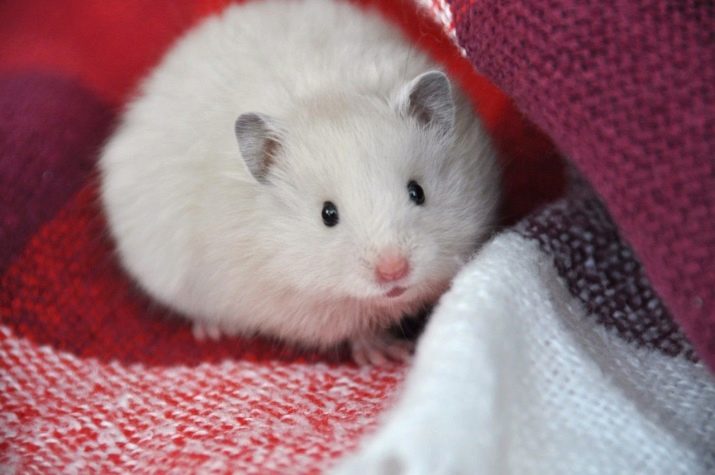
Listed below are key options to help you make the right choice.
- Age. It should not be less than 3 weeks. This is due to the need of the hamster in breast milk, because such a crumb does not yet have the ability to self-feed. A female older than 2 months can easily be pregnant, as the pet store often contains a large number of heterosexual rodents in one cage. A hamster aged 3 weeks to 2 months is easier to tame. You can determine the age of the future pet by paying attention to the teeth - over time they noticeably turn yellow.
- Floor. Males are calmer and friendlier in character. However, in the wild, they are used to marking their territory, therefore, there will be more smell from them - males often require a replacement filler.Females are more quick-tempered, but also more active - it is more interesting to watch them. You can determine the gender of the hamster by carefully examining its lower part. In the female, the distance between the anal and vaginal opening is insignificant, in addition, she has less hair in the lower abdomen.
- Purchase time. Since hamsters are nocturnal, it is easier to evaluate the activity and nature of the future pet in the evening. If you come to the pet shop in the evening, you can see active and friendly animals, and not sleeping fur lumps. So it will be easier to choose a friend who is similar in temperament.
- Health status. Of course, when buying a hamster, you cannot be 100% sure that he is completely healthy. But the clear signs of disease can still be noticed. Pay attention to the coat - it should be dry, clean and smooth, without bald spots. The eyes and nose should also be clean, without discharge.
- Activity. Hamsters are very agile and nimble by nature. If the animal, despite the evening hour and comfortable conditions of detention, barely moves, preferring to lie in the corner of the cage - this can also be a sign of illness.
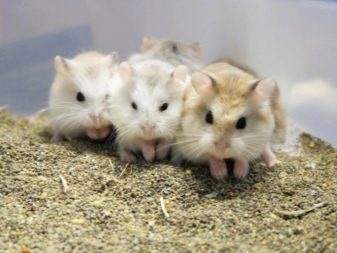
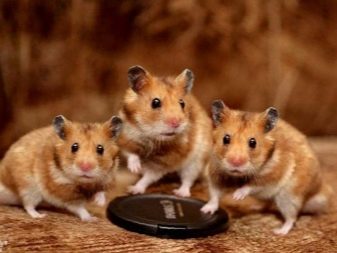
After buying a hamster, it is better not to touch it for a day. During this time, the baby will be able to get comfortable in a new place and then the acquaintance will be much more pleasant for both of you. In further taming, be guided by the principle of "slower driving - you will continue." Take gradual steps towards rapprochement, causing more confidence and less fear in your new friend, avoid sudden movements in communication with him.
Subject to these rules, it will be easy and pleasant for you to take care of the hamster, and it will be comfortable and safe for him.
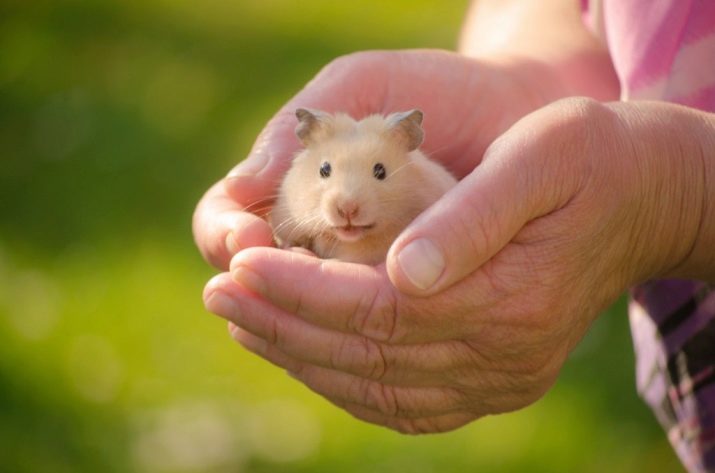
For more information on the breeds of hamsters, see the next video.
